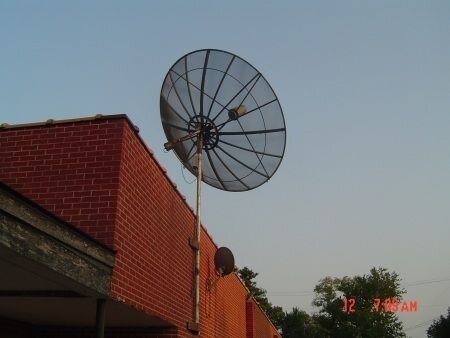Thanks PSB for the grounding tip. Everything in this building is grounded to the service ground. It was built in 1956 by a construction crew that built like they had no limits on money. 
After finding the furthest satellite that I wanted to on the West end, I found AMC 7. Which leaves me with an 1" to 1.5" to extend the motor arm out a little for further East viewing. There is one TP listed as ITC and that doesn't have anything, so I will ask my question about the next one East. AMC 10 has TP3 which I can lock onto by making some adjustments in skew etc. but the No Authorization black screen kind of comes and goes. There are some other TP's on AMC 10 like TP 9 and 10 which I can't get much except rolling garble even after verifying polarity and playing with the skew. Probably not all TP's are created equal, and they may not all have the same broadcast strength.
Should I be able to view TP 9 and 10 with a clear picture? If so, I need to make a minor adjustment in elevation or something to be able to do so.
Maybe if someone has a ITC TP or two on each satellite that should have a clear picture, I could try them and quit worrying whether or not the dish is set correctly across the belt.
Thanks in advance for your help and patience while I try and tweak this for analog in preparation for DVB.
After finding the furthest satellite that I wanted to on the West end, I found AMC 7. Which leaves me with an 1" to 1.5" to extend the motor arm out a little for further East viewing. There is one TP listed as ITC and that doesn't have anything, so I will ask my question about the next one East. AMC 10 has TP3 which I can lock onto by making some adjustments in skew etc. but the No Authorization black screen kind of comes and goes. There are some other TP's on AMC 10 like TP 9 and 10 which I can't get much except rolling garble even after verifying polarity and playing with the skew. Probably not all TP's are created equal, and they may not all have the same broadcast strength.
Should I be able to view TP 9 and 10 with a clear picture? If so, I need to make a minor adjustment in elevation or something to be able to do so.
Maybe if someone has a ITC TP or two on each satellite that should have a clear picture, I could try them and quit worrying whether or not the dish is set correctly across the belt.
Thanks in advance for your help and patience while I try and tweak this for analog in preparation for DVB.



